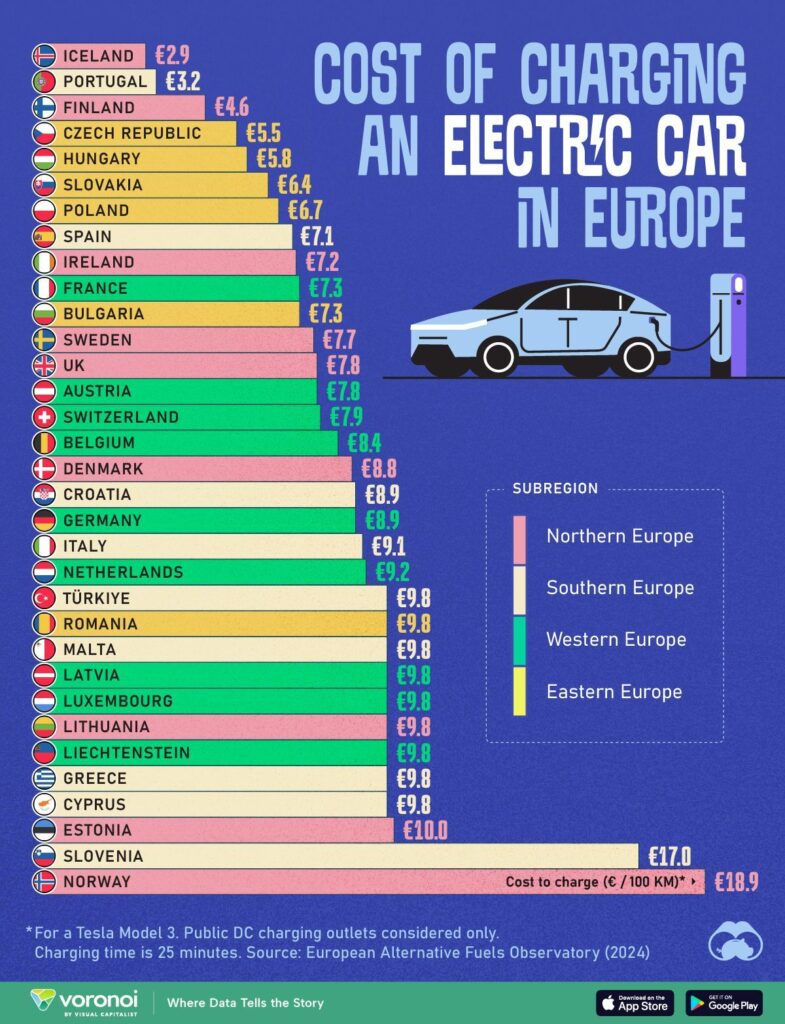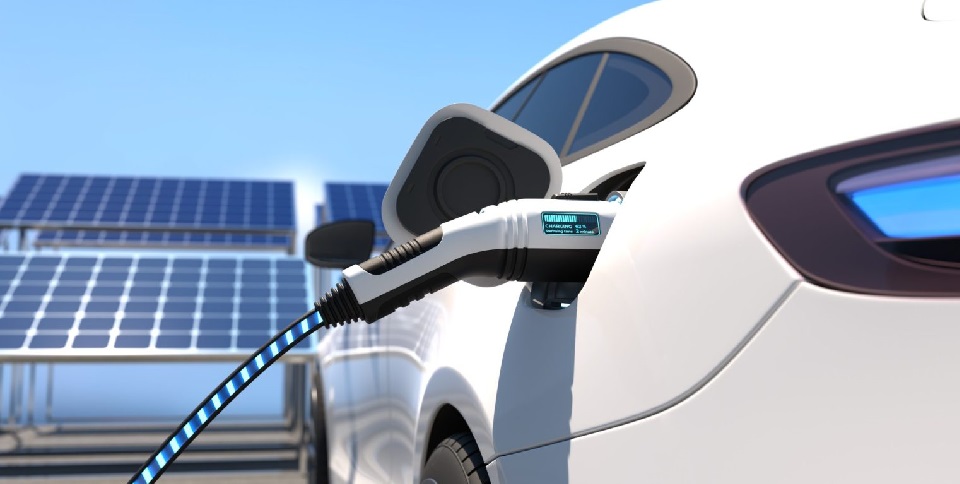The transition towards electric mobility in Europe is progressing rapidly, driven by both the automotive industry and energy policies aimed at reducing CO2 emissions.
However, one of the key factors for the mass adoption of electric vehicles (EVs) remains the cost of charging these cars compared to traditional fuel prices.
A recent analysis by the European Alternative Fuels Observatory (EAFO) reveals a significant variation in “refuelling” costs among European countries.
Iceland, Portugal, and Finland lead in affordable costs
According to a chart published by Visual Capitalist based on EAFO data, Iceland (2.9 euros), Portugal (3.2 euros), and Finland (4.6 euros) are the countries where drivers enjoy the lowest prices for charging their EVs.
These figures refer to the average cost of charging a car at a public station for 25 minutes per 100 kilometres (km).
In the case of Iceland, the reasons behind the low prices lie in the extensive use of geothermal and hydroelectric energy for electricity generation.
Reports indicate that over 85% of the energy in the country comes from renewable sources, thereby reducing operational costs for energy providers.
This not only benefits end consumers with lower prices at public charging stations but also supports a more sustainable energy model.
Portugal and Finland, for their part, have implemented energy policies that favour the integration of renewable energies and the electrification of transport.
Such an approach not only encourages the adoption of EVs but also reduces reliance on fossil fuels, thereby mitigating environmental impact.
What about the other countries?

The cost of charging an electric vehicle varies considerably across the European continent.
In countries such as Spain (7.1 euros), Ireland (7.2 euros), and France (7.3 euros), while the prices are competitive, they remain far from the figures seen in the leaders of the ranking.
The variability of prices in Europe largely depends on each country’s energy mix.
Countries that rely more on traditional sources, such as coal or gas, tend to have higher charging costs due to the impact of fluctuations in fossil fuel prices and carbon tax policies.
In Germany (8.9 euros), Italy (9.1 euros), and the Netherlands (9.2 euros), key markets for EVs in the region, costs are significantly higher.
The cost of charging an electric vehicle not only depends on the type of energy used but also on the available charging infrastructure.
Within the European Union, the lack of an extensive and efficient network of public chargers has been a barrier to the mass adoption of EVs.
According to the European Automobile Manufacturers Association (ACEA), by the end of 2023, there were approximately 632,423 public charging points across the EU, while the number of battery electric vehicles (BEVs) reached three million.
The European Commission has underscored the need to install 3.5 million charging points by 2030 to achieve the level of electrification necessary to reduce CO2 emissions by 55%.
According to ACEA projections, meeting these targets would require the installation of over 1.4 million chargers per year.
This challenge necessitates not only investment but also coordination between the public and private sectors.
One of the determining factors for reducing charging costs across Europe is the adoption of renewable energy within the electricity grid.
Countries such as Sweden (7.7 euros) and France (7.3 euros), which have prioritised the use of clean sources like nuclear and hydroelectric power, are in a better position to offer competitive rates for EV drivers.
Conversely, countries like Estonia (10 euros) and Slovenia (17 euros), which rely more on conventional energy sources, face greater challenges in reducing charging prices.
At the opposite end of the ranking, Norway, a global leader in the adoption of electric vehicles, surprises with an average cost of 18.9 euros per 100 km.
This figure is the highest in Europe.








